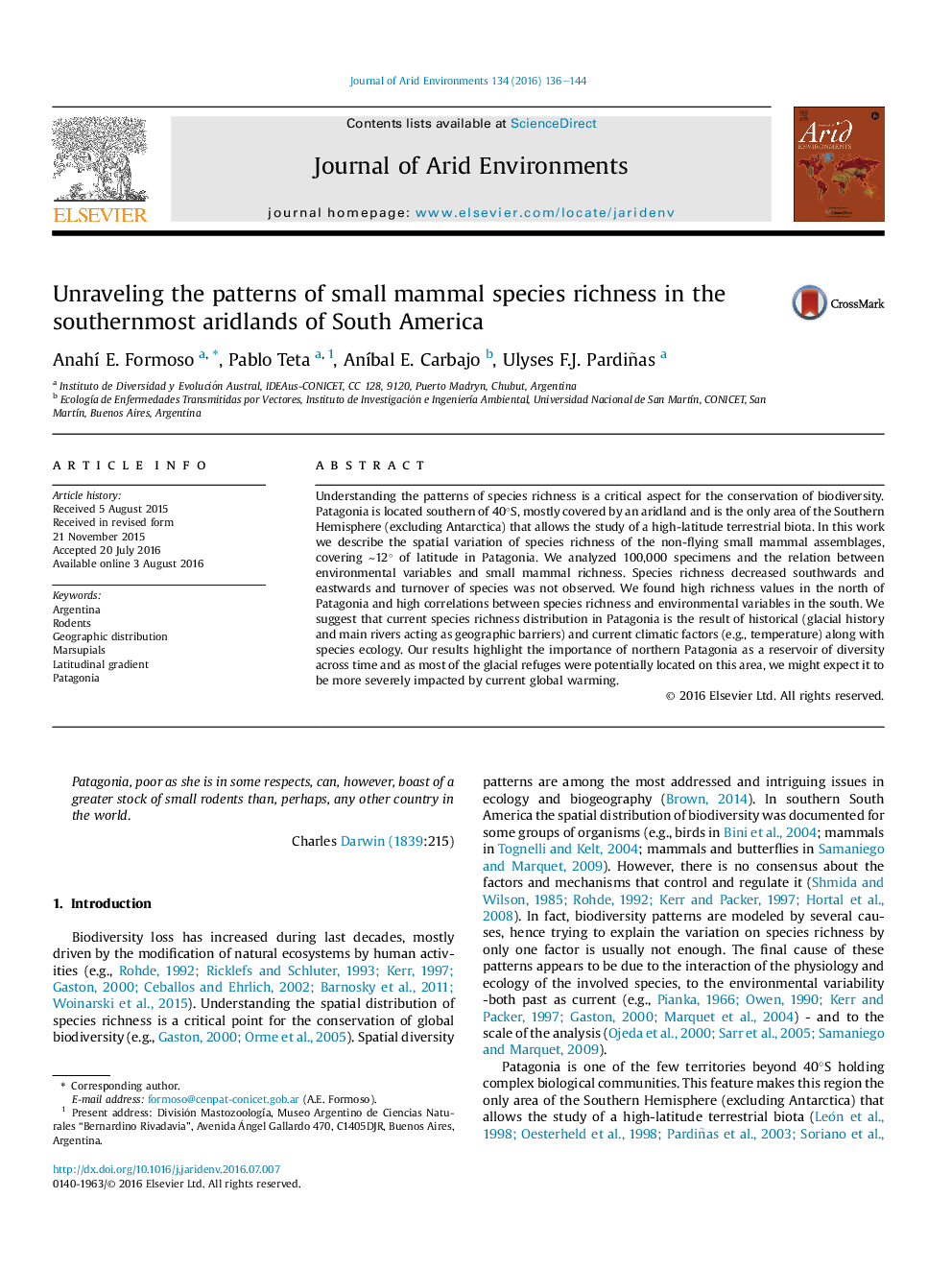| کد مقاله | کد نشریه | سال انتشار | مقاله انگلیسی | نسخه تمام متن |
|---|---|---|---|---|
| 6303132 | 1618225 | 2016 | 9 صفحه PDF | دانلود رایگان |
- The study of >80,000 individuals reveals that Patagonia aridlands embrace 2 marsupials and 21 rodent taxa.
- Small mammal species richness in Patagonia is mainly driven by altitude.
- High values of species richness in North Patagonia reflect a history of large areas free of ice and Pleistocene refugia.
- Species richness mirrored the differential interplay between environmental variables and a deep glacial history.
- The impoverishment of Patagonian assemblages towards high latitudes occurs by loosing taxa almost without species turnover.
Understanding the patterns of species richness is a critical aspect for the conservation of biodiversity. Patagonia is located southern of 40°S, mostly covered by an aridland and is the only area of the Southern Hemisphere (excluding Antarctica) that allows the study of a high-latitude terrestrial biota. In this work we describe the spatial variation of species richness of the non-flying small mammal assemblages, covering â¼12° of latitude in Patagonia. We analyzed 100,000 specimens and the relation between environmental variables and small mammal richness. Species richness decreased southwards and eastwards and turnover of species was not observed. We found high richness values in the north of Patagonia and high correlations between species richness and environmental variables in the south. We suggest that current species richness distribution in Patagonia is the result of historical (glacial history and main rivers acting as geographic barriers) and current climatic factors (e.g., temperature) along with species ecology. Our results highlight the importance of northern Patagonia as a reservoir of diversity across time and as most of the glacial refuges were potentially located on this area, we might expect it to be more severely impacted by current global warming.
Journal: Journal of Arid Environments - Volume 134, November 2016, Pages 136-144
